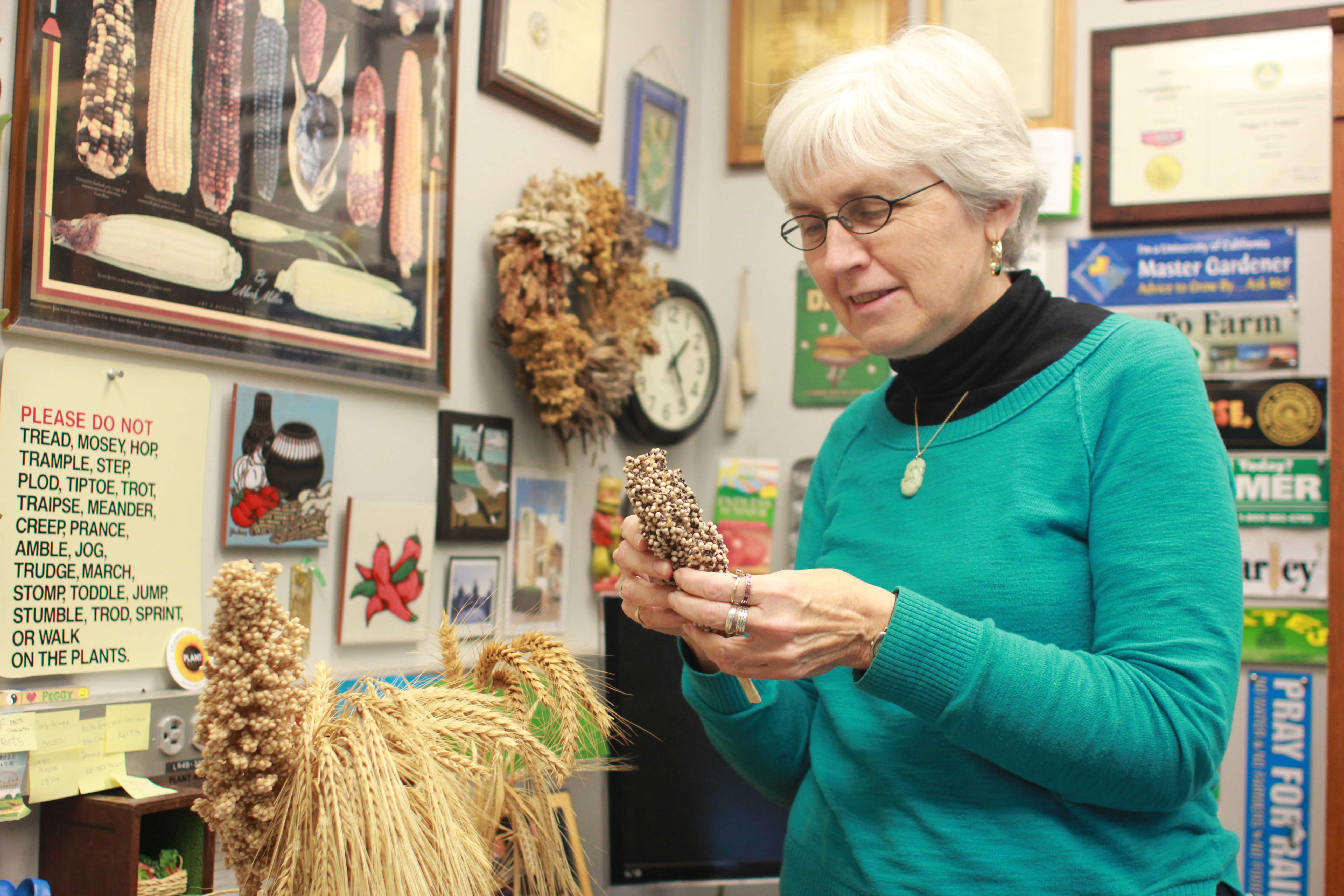
Peggy Lemaux. Photo by Queena Xu.
An important aspect of Dr. Peggy G. Lemaux's Cooperative Extension Specialist position involves, in addition to maintaining an active research program, she takes responsibility for an outreach program. These efforts, involving the public, legislators, media, food professionals, teachers and K-14 audiences, cover topics like plants, agriculture, food production and the impact of genetic technologies on crops and foods. Her outreach program embraces a wide variety of efforts.
Public Presentations
For over almost thirty years, Lemaux has given many speaking engagements and has been involved in numerous public education efforts. As well as being sought out as an expert on agriculture, food and the many genetic technologies used on crops and foods.
One important aspect of this effort is an award-winning website, ucbiotech.org, devoted to providing educational resources focused broadly on issues related to agriculture, crops, animals and, foods. The site has links to her presentations and an expansive slide arichive, which can be downloaded and used for educational purposes.
Science Communication
Started in 2015 with funds from the UC Office of the President’s Global Food Initiative, Lemaux initiated, with UC Davis and UC San Diego, the CLEAR (Communication, Literacy and Education for Agricultural Research) program. This effort aims to enable undergraduates, graduate students and postdocs to improve their communication skills to share with the general public, fact-based information on agriculture, food and science in general. CLEAR members practice their skills, as is possible, by speaking in public forums, sponsoring roundtable discussions on contemporary topics, writing pieces for the media and blogs and creating informational videos.

As part of the CLEAR program led by Lemaux, graduate student Lorenzo Washington explains the process of pollination at a community event. Photo by Tuesday Simmons.
Educational Resources
Lemaux and her long-time assistant, Barbara Alonso, develop educational resources on food and agriculture, which are disseminated to professionals, the media and consumers. These resources include the following:
- Afterschool curricula: 4-H/afterschool curricula, aimed at middle school audiences, cover topics from plant diversity to genetics. DNA for Dinner, Backyard Mystery and All in the Touch are freely available to download. Many activities are stand-alone and can be easily modified for other age groups.
- Games: Educational games are available to help make connections between seeds, plants and foods. Some build off of activities from the curricula. Games include “Who’s In Your Family”, “Dirt to Dinner” and “Who’s the Culprit” and cover topics from food families, what plants are eaten in what foods, and what microbes are involved in diseases - some topics related to the COVID-19 pandemic. They exercises in these curricula - are intended to enhance observational and communication skills. Suitable for K to gray.
- Displays: Three colorful, tactile displays, available on loan for free: Biotech and Foods, Genetics and Diversity and Biotechnology for Sustainability, all with companion educational cards. Suitable for K to gray.
- Cards and Handouts: Easy to use group activities can be used alone or with the educational displays. Cards and activities are available in English and Spanish. Suitable for K-6+
- Teaching Tools: Cards and teacher handouts in English and Spanish accompany the displays. The GENEie juice bar with an accompanying video makes DNA extraction from food easy. Suitable for K to gray.
In addition to resources being available online, we meet with teachers and afterschool facilitators at various meetings throughout the state to demonstrate how these materials can be used in classrooms.
Crop-specific Outreach

The Millet Project involves a group of PMB students and researchers who launched a campaign to grow, cultivate, and market millets. Photo by Jim Block.
At the national level, Lemaux served as lead PI for extension and education for the USDA CSREES Rice CAP (Coordinated Agricultural Project) and Barley CAP and was on Advisory Boards for the Wheat CAP and Conifer CAP.
Lemaux and Alonso are involved in USDA-funded projects to educate growers, end-users and non-agricultural citrus owners on the research and methods being used to protect citrus from damage by a microbe responsible for Huanglongbing or citrus greening disease. These efforts are described on the Science for Citrus Health website.
The Millet Project involved a group of PMB students and researchers, who launched a campaign to grow, cultivate and market millets, a nutritious, gluten-free cereal grain, higher in protein and micronutrients and lower in water needs than corn and rice. Funded by the Berkeley Food Institute and the UCB CLEAR project, the project engaged growers in numerous California locations to cultivate several millet varieties and hosted a Gill Tract event for two summers to introduce the community to millet through field tours and foods made from millet.
Media Resource
Writers and reporters frequently seek Lemaux out as an expert to provide information and expert opinions on various topics relating to topics ranging from food safety to intellectual property, and from environmental concerns to farming practices, from product labeling to organic farming practices. Because consumer’s attitudes are increasingly shaped by what they read and hear, this activity is one of her most important efforts and one in which CLEAR members are being trained.

